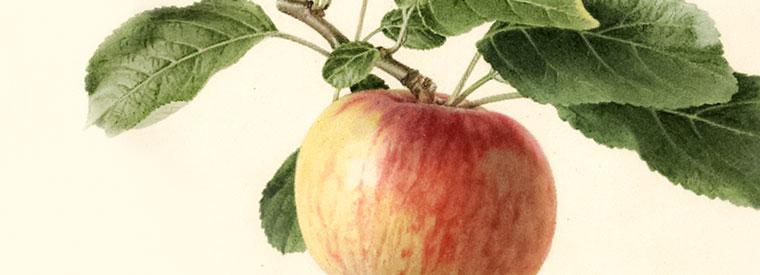Fine fruit is the most perfect union of the useful and the beautiful that the earth knows.

Fruit
ROXBURY RUSSET is also called Boston Russet, Putnam Russet, Leather Coat, Shippen's Russet, Belpre Russet, Marietta Russet, Sylvan Russet, Hewe's Russet and Warner Russet. It originated early in the 17th century in Roxbury, Massachusetts, and is probably the oldest named variety of apple in America. Propagation wood was taken to Connecticut soon after 1649. Medium to large in size, and elliptical in shape, the green skin is tinged a bronze, and overspread with a brownish-yellow russet. Sometimes, there is a reddish blush on the sun-exposed side. The hint of ribbing can be sometimes seen. The greenish-yellow flesh is coarse, medium depth; calyx is closed; basin round of moderate depth; the core is compact, and the seeds are usually defective. The spreading tree is crooked growing when young, and the bark is a reddish-olive. The broad, oval, shiny leaves are folded near the edge and slightly reflexed. A deep-green in color, they are regularly and moderately serrated with a heavy pubescence. An all-purpose apple, good for cooking or eating, it contains 12.87% sugar that ferments to 6% alcohol in hard cider production. The Roxbury Russet can be distinguished from the Golden Russet by the larger tree with a heavier crop, larger and distinctly elliptical fruit, thicker stem with a red tinge on one side and coarser and more yellow flesh. Roxbury Russet stores well and ripens in late September and early October.
Roxbury Russet is considered a triploid variety, for good fruit set orchardists should plan to grow at least two other varieties which bloom during the same period.
Ripening Period
- Early Fall - September
- Mid Fall - October


